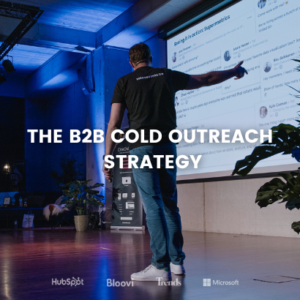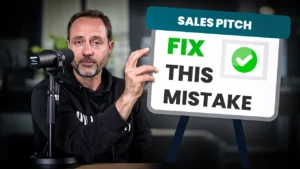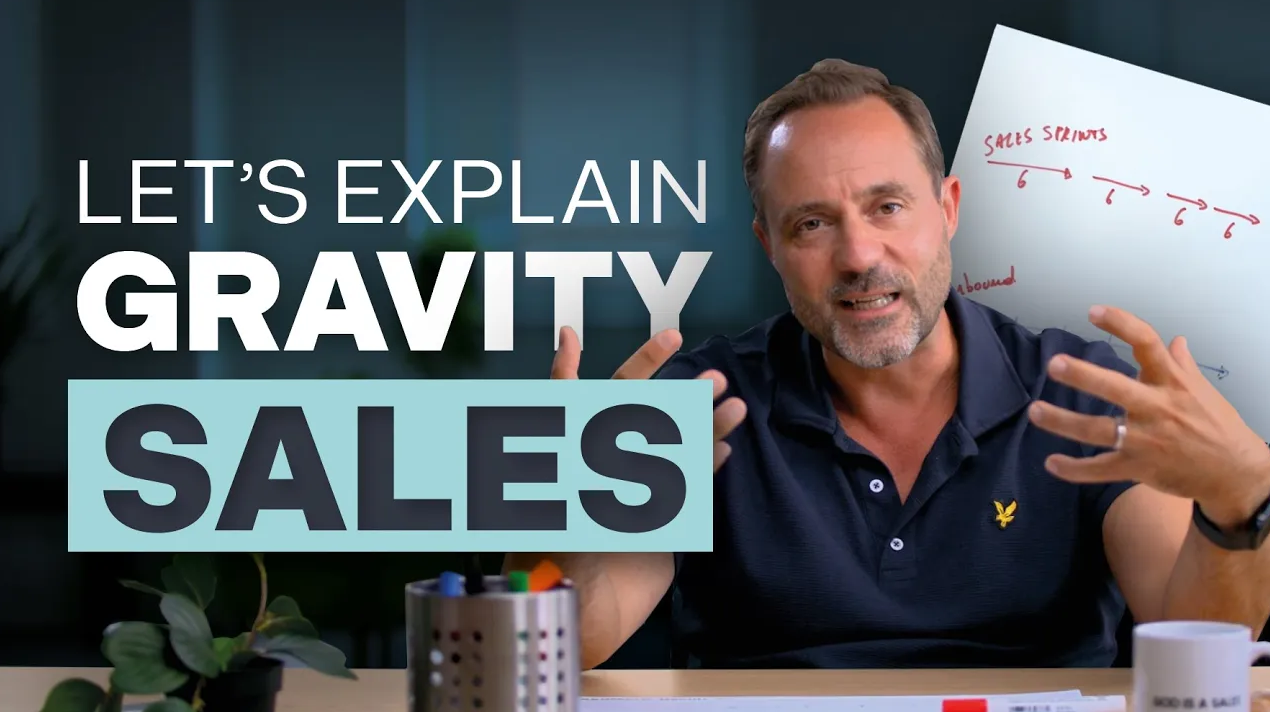In the ever-evolving world of sales, the traditional approaches of cold calling, aggressive pitching, and relying on a high volume of leads are becoming increasingly ineffective. Customers today are savvier, more discerning, and less receptive to the hard-sell tactics of the past. As a sales professional, I’ve long been searching for a more sustainable and effective sales model – one that not only attracts potential customers but also builds trust and rapport.
Enter the Gravity Sales model, a revolutionary approach that I’ve developed over the past several years. This model harnesses the power of content, expertise, and a strategic blend of inbound and outbound tactics to create a “gravity well” that draws customers in, rather than pushing them away.
The Limitations of Traditional Sales Approaches
Traditional sales models often rely on a high-volume, high-pressure approach, where salespeople are tasked with making as many cold calls and sending as many emails as possible, in the hopes of converting a small percentage of those leads. This approach can be exhausting for both the salesperson and the customer, leading to a high rate of burnout and a growing distrust of sales professionals.
Moreover, the rise of the internet and the abundance of information available to consumers has made it increasingly difficult for salespeople to stand out and capture the attention of their target audience. Customers today are more informed, more skeptical, and more selective in the companies and products they choose to engage with.
The Gravity Sales Model: Attracting Customers Through Expertise and Content
The Gravity Sales model is designed to address these challenges by shifting the focus from pushing products and services to attracting customers through the power of expertise and content. The model is built on two key pillars:
1. Organic Content and Expertise Sharing
The first step in the Gravity Sales model is to establish yourself as an expert in your field. This involves consistently creating and sharing high-quality content that provides value to your target audience, without any direct sales pitch. This could take the form of blog posts, videos, podcasts, or any other medium that allows you to showcase your knowledge and expertise.
By consistently sharing your expertise, you’ll begin to build trust and credibility with your audience. They’ll see you as a valuable resource, someone who is genuinely interested in helping them solve their problems, rather than just trying to sell them something.
2. Targeted Sales Sprints
While the organic content and expertise sharing is crucial for building your brand and attracting potential customers, it’s not enough on its own to generate the leads and sales you need to grow your business. That’s where the second pillar of the Gravity Sales model comes in: targeted sales sprints.
The idea behind the sales sprints is to take the content and expertise you’ve already created and use it to proactively reach out to potential customers. This could involve sending a personalized email or LinkedIn message, sharing a relevant blog post or video, or even scheduling a call to discuss how your products or services can help them.
The key to successful sales sprints is to focus on quality over quantity. Rather than blasting out generic messages to a large list of contacts, you’ll want to carefully identify and target the individuals and organizations that are most likely to be interested in what you have to offer. This requires a deep understanding of your ideal customer profile and a willingness to do the research necessary to identify the right prospects.
The Gravity Sales Flywheel: Combining Inbound and Outbound Tactics
The true power of the Gravity Sales model lies in the way it combines the inbound and outbound tactics into a self-reinforcing flywheel. Here’s how it works:
1. Organic Content and Expertise Sharing (Inbound)
As you consistently create and share valuable content, you’ll begin to attract a following of potential customers who are interested in what you have to say. These individuals may find your content through search engines, social media, or other channels, and they’ll be drawn to your expertise and the solutions you offer.
2. Targeted Sales Sprints (Outbound)
Using the content and expertise you’ve built through your inbound efforts, you’ll then reach out to targeted prospects through your sales sprints. This allows you to leverage your existing content and position yourself as a trusted advisor, rather than just another salesperson.
3. Feedback and Refinement (Inbound and Outbound)
As you engage with both your inbound audience and your outbound prospects, you’ll gather valuable feedback and insights that can help you refine your content, your sales approach, and your overall strategy. This feedback loop allows you to continuously improve and optimize your Gravity Sales model, ensuring that it remains effective and relevant over time.
The Benefits of the Gravity Sales Model
By embracing the Gravity Sales model, you’ll enjoy a number of key benefits:
1. Increased Trust and Credibility
By positioning yourself as an expert and a valuable resource, you’ll build trust and credibility with your target audience. This makes it easier to engage with potential customers and ultimately convert them into paying clients.
2. More Efficient Lead Generation
The Gravity Sales model is designed to attract high-quality leads that are already interested in what you have to offer. This means you’ll spend less time chasing down unqualified leads and more time closing deals with customers who are ready to buy.
3. Reduced Sales Fatigue
The high-pressure, high-volume approach of traditional sales models can be draining for both salespeople and customers. The Gravity Sales model, on the other hand, is designed to be more sustainable and enjoyable, reducing burnout and increasing job satisfaction.
4. Scalable Growth
As you build your expertise and content library, the Gravity Sales model becomes increasingly scalable. You can leverage your existing resources to reach more and more potential customers, without having to constantly reinvent the wheel.
Implementing the Gravity Sales Model in Your Business
If you’re ready to start implementing the Gravity Sales model in your business, here are the key steps to get you started:
1. Identify Your Expertise and Develop a Content Strategy
- Determine the specific areas of expertise that you can share with your target audience.
- Develop a content strategy that will allow you to consistently create and share valuable, informative content.
- Choose the right channels and formats (e.g., blog posts, videos, podcasts) to reach your audience.
2. Establish Your Outbound Sales Sprints
- Identify your ideal customer profile and the specific individuals or organizations you want to target.
- Develop a process for researching and reaching out to these prospects, using your existing content as a way to start the conversation.
- Experiment with different outreach tactics and messaging to see what works best.
3. Continuously Refine and Optimize
- Monitor the performance of your inbound and outbound efforts, and use the feedback and insights you gather to make adjustments.
- Experiment with new content formats, sales tactics, and targeting strategies to continually improve your Gravity Sales model.
- Stay up-to-date with the latest trends and best practices in sales and marketing to ensure your approach remains effective.
Conclusion
The Gravity Sales model represents a fundamental shift in the way we approach sales and customer acquisition. By focusing on the power of expertise and content, and combining inbound and outbound tactics, you can create a self-reinforcing flywheel that attracts and converts customers more effectively than traditional sales models.
As you implement the Gravity Sales model in your business, you’ll not only see an increase in leads and sales, but you’ll also build a stronger, more sustainable brand and a more fulfilling sales process for both you and your customers. So why not give it a try and see how the power of gravity can transform your sales approach?
For more resources and information on the Gravity Sales model, be sure to check out Michael Humblet’s website and Chaomatic.com.






